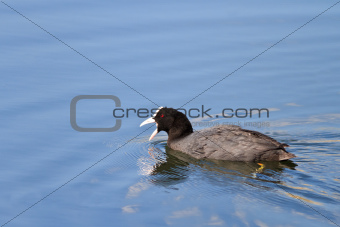
If you want to display the stored image data in your canvas app from your SP list, you could reference the Multiple Lines of Text type column value directly in the Image property of the Image control. MultipleLinesTextColumn: First(colPhoto).ValueĪfter that, the image data would be stored in your SP list as below: Set the OnSelectproperty of the "Submit" button to following ( press it to submit data back to your SP List Patch( Set the Imageproperty of the Image control to following: First(colPhoto).Value Substitute(JSON(Camera1.Photo, JSONFormat.IncludeBinaryData),"""", "") Set the OnSelectproperty of the Camera control to following: ClearCollect( Within your canvas app, refresh the SP List data sourceģ. Add a "Multiple Lines of Text" type column in your SP list, which is used to store the captured image data from your canvas app.Ģ. Please consider take a try with the following workaround:ġ.
Saving images in coot software Patch#
How do you store the image data captured from your canvas app to your SP List? Store the image into a "Multiple Lines of Text" type column or attach it as a attachment of a SP List Item? Using Patch function to submit data back to your SP List?īased on the needs that you mentioned, I think the "Multiple lines of Text" type column in your SP List could achieve your needs. Hi you please share a bit more about your scenario? ^ 'Coot model building tools for molecular graphics - Google Scholar'.CS1 maint: multiple names: authors list (link)



' Developments in the CCP4 molecular-graphics project'.
Saving images in coot software software#
The software has gained considerable popularity over the past 5 years, overtaking widely used packages such as 'O', XtalView, and Turbo Frodo. Pukka puckers - check for unusual DNA/RNA conformations.NCS differences - check for general differences between NCS related chains.Probe clashes - check for Hydrogen atoms with inappropriate environments (using Molprobity).Density fit analysis - identify parts of the model which don't fit the density.Rotamer analysis - check for unusual protein side-chain conformations.But they’re closer relatives of the gangly Sandhill Crane and the. Their dark bodies and white faces are common sights in nearly any open water across the continent, and they often mix with ducks. A close look at a cootthat small head, those scrawny legsreveals a different kind of bird entirely. Peptide omega analysis - check for non-planar peptide bonds. The waterborne American Coot is one good reminder that not everything that floats is a duck.Geometry analysis - check for improbable bond lengths, angles, etc.Check waters by difference map variance.Check/Delete waters - check for water molecules which do not fit the density.Difference map peaks - check for large differences between observed and calculated density.Unmodelled blobs - check for electron density not accounted for by existing atoms.Incorrect chiral volumes - check for chiral centres with the wrong handedness.Kleywegt plot - examine differences between the torsions of NCS-related chains.

Ramachandran plot - validate the torsion angles of a protein chain.Having built an initial model, it is usual to check all of these and reconsider any parts of the model which are highlighted as problematic before deposition of the atomic coordinates with a public database. Coot provides a range of validation tools, listed below. To avoid this, careful validation is required. As a result, it is possible to build an incorrect atomic model into the electron density in some cases. In macromolecular crystallography, the observed data is often weak and the observation-to-parameter ratio near 1.


 0 kommentar(er)
0 kommentar(er)
